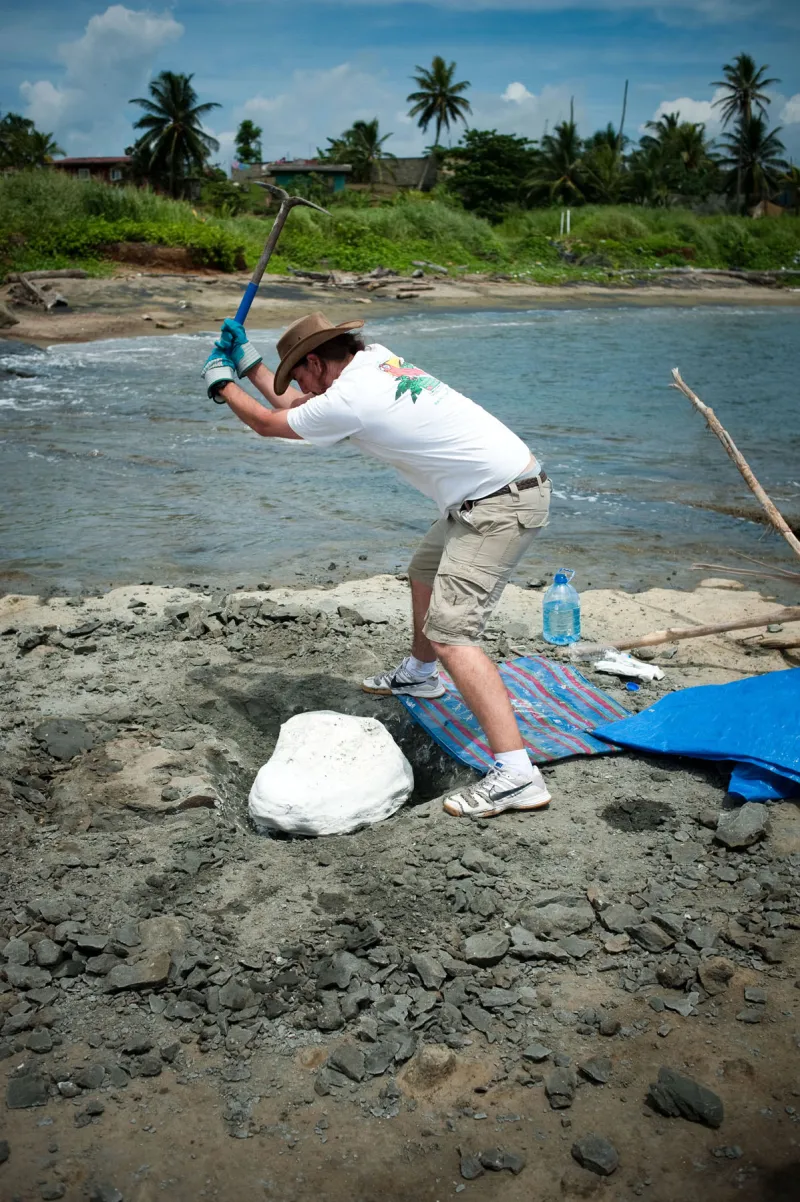Dislodging the Fossil

Paeleobiologist Dr. Nicholas Pyenson, Curator of Fossil Marine Mammals for the Smithsonian's National Museum of Natural History (NMNH), set out with Jorge Velez-Juarbe, NMNH Research Student and Ph. D. Candidate at Howard University and Aaron O'Dea from the Smithsonian Tropical Research Institute on an expedition in Panama to excavate a squalodontid, commonly referred to as a shark-toothed dolphin, in June 2011.
After several hours of non-stop digging, the scientists exposed a deep enough trench around the skull to be able to apply a plaster bandage cap around the block of rock containing the fossils. The scientists wrap the perimeter of the block as tightly as possible, so that the resultant jacket fits snugly. They applied around five layers over the entire surface; once set, the plaster formed a cap around the block, which sat on a pedestal. Here a researcher takes large pick and strikes the base of the pedestal that the fossil caps sits upon. Done correctly, a few good whacks will dislodge the jacket, flip it, and remove it.
Watch a time-lapse video of the dig, peruse a slideshow, and read Dr. Pyenson's account of the Panama expedition on the Ocean Portal Paleobiology Blog.

